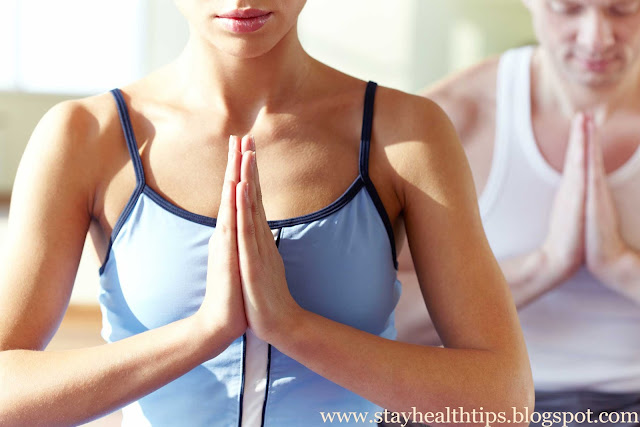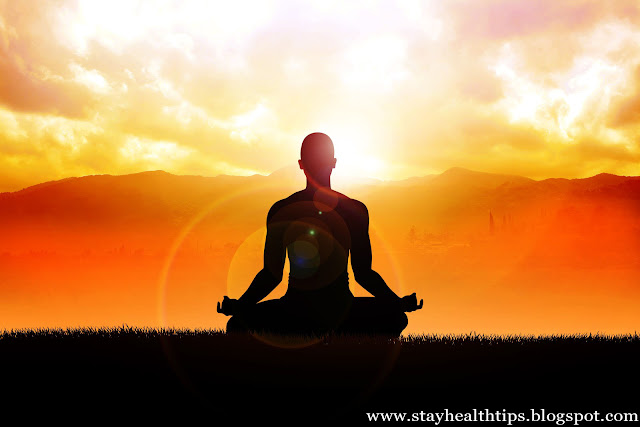Yoga Beginner: We've pretty much accepted that yoga is an effective life
changing practice that is here to stay. Still, not all yoga practices are made
equal. As astounding as the yoga practice is (I should know, I've been teaching
and practicing for the past twelve years) it's still a physical practice, and
simply like whatever other type of movement you can hurt yourself.
I'm certain we all remember the startling article "How
Yoga Can Wreck Your Body" a couple of years back in the New York Times
talking about the dull side of the yoga practice -- the injuries we are not
talking about. The article goes as far as to say that one well understand yoga
teacher believes that "by far most of individuals should give up yoga all
together. It's basically too likely to cause harm."
Regardless of this article, millions still practice yoga in
the U.S. I most definitely decline to give up a practice that has truly
transformed my life from the back to front. So instead I'm giving you five
basic ways to approach your yoga practice that will assist keep you safe and
injury-free.
1: Breathe Deeply
Regardless of the fact that we generally take the breath for
granted, it is the most important bit of your yoga practice. When the breath is
sharp and short it can activate the flight or fight response in the nervous
system making you feel anxious. When you are anxious you are less inclined to
make capable choices in your yoga practice - Yoga Beginner. Rather than streaming effortlessly
through the practice the struggle ensues making you more vulnerable to harming
yourself.
Have you ever seen an accomplished yoga teacher practice?
They make it look easy and often times quite lovely. Why? They are profoundly
connected to their breath. So make sure you breathe profoundly. If you can't
then you need to take a child's pose or a period out.
2: Stability over Flexibility
If I had a nickel for how frequently I've heard somebody
say, "I'm not stretchy enough for yoga," I'd have a lot of nickels.
Yoga has the stigma that in order to practice you need to be able to twist
yourself into shapes that makes you feel like you're planning for Cirque Du
Soleil, or a exceptionally brave sexual adventure. I'm going to give you access
on a bit secret -- super flexible yogis have it pretty much as hard as those
who can't even touch their toes.
When somebody is over-flexible they are more inclined to
dump into their joints and ligaments because most likely they can't feel the
stretch unless they do. But here's the thing: Flexibility will just take you so
far in your practice. If you don't have the muscular and stability engagement
to back it up, you run the risk of doing harm to your body. Possibly not right
away but over time all of that unsteadiness can lead to injury.
I had a student who was a acrobat when she was younger and
then moved on to yoga. In her late 30s she found that her pelvis had moved in
her body because the muscles around it were not solid enough. Obviously it was
a humbling experience.
Rather than attempting to push into your flexibility, find
balance by attractive your muscles. Begin from whatever touches the work up and
ground. Think about hugging your muscles towards the bone. What's more, never
forget that for the bulk of the practice, your abdominals should be involved.
3: Keep Your Eyes on Your Mat
In some cases I avoid giving a deeper choice to a pose
because I sense an excess student will do it even if they aren't prepared. Yes,
the self image shows up quite a bit in the yoga practice and can even bring
about injury. Regularly I see people attempting postures that they aren't
skilled or warmed up enough to attempt (Yoga Beginner). I see people avoiding props and
expecting to stay aware of everyone around them.
My recommendation is to keep your eyes on your own mat.
Simple because flexi Francis can do a full part doesn't mean you have to.
Simple because muscles Magee can land that arm balance doesn't mean you will.
And it's all great. Sure you can attempt but if you start to enter into a
posture and it suddenly stops feeling protected, stay where and back off you
are. There's always tomorrow.
4: Practice More Than Once a Week
The thing about the body is that it's not going to change
overnight. Your muscles need time and consistency to open, get stronger and
lengthen. Practicing once a week isn't going to encourage that.
If you are going to focus to a yoga practice, you need to go
at least three times a week. While practicing once a week does get you into
your body, it basically isn't enough to truly create lasting physical change.
5: Be Open to More Than Just Yoga
I recently heard a yoga teacher share that, notwithstanding
the fact her healer advised her to engage in weight training to assist heal
couple of yoga injuries, it was "never going to happen." It's
incredible to be committed to your yoga practice but you don't want to be
closed off to other types of physical movement.
Pretty much as I believe a regular yoga practice needs to be
balanced with acupuncture or therapy or meditation to foster emotional
transformation, I additionally know that occasionally the physical yoga
practice is not insufficient to heal certain injuries or keep the body
balanced. There are sure muscles the practice will not reach and sometimes when
managing an injury you need to strengthen these muscles to balance the ones
that are potentially pulling and over worked your body out of alignment.
It could be as basic as doing a couple of muscle-specific
exercises daily for a couple of months or adding some weight training. Trust
me; your yoga practice is not like a jealous boyfriend. If you need to include
other modalities it's absolutely cool.
















